-
CATEGORY ::
- All Seeds /
- All Deer Food Plot Seed








Deer Greens
LATIN NAME
Brassicas
SEASON
Annual
WHEN TO PLANT
5 - 7 weeks before frost in fall
MOISTURE REQUIREMENTS
Moderate
CROP HEIGHT
48 inches
COLD TOLERANCE
Excellent
HEAT TOLERANCE
Fair
SHADE TOLERANCE
Good
DAYS TO MATURITY
55 - 75 days
PLANT CHARACTERISTICS
Excellent regrowth, winter hardiness, erosion control
LATIN NAME
Trifolium michelianum savi
SEASON
Annual
BLOOM COLOR
Pink
WHEN TO PLANT
Fall (best) or early spring
PLANT CHARACTERISTICS
Biomass production
ESTABLISHMENT RATE
Fast
MOISTURE REQUIREMENTS
Low
ACIDIC SOIL TOLERANCE
High
COLD TOLERANCE
Good
HEAT TOLERANCE
Good
SHADE TOLERANCE
Fair
FERTILITY NEEDS
Low
MATURE HEIGHT
48 - 72 inches
LATIN NAME
Trifolium alexandrinum
SEASON
Annual
BLOOM COLOR
White
WHEN TO PLANT
6 - 8 weeks before first frost
PLANT CHARACTERISTICS
Heat tolerant, nitrogen fixator
ESTABLISHMENT RATE
Fast
MOISTURE REQUIREMENTS
Moderate
ACIDIC SOIL TOLERANCE
Moderate
COLD TOLERANCE
Poor
HEAT TOLERANCE
Excellent
SHADE TOLERANCE
Good
FERTILITY NEEDS
Low
MATURE HEIGHT
18 - 48 inches
About...
Deer Greens is a 100% mixture of brassicas including rape, purple top turnip, kale and radish that provides an abundant high protein and energy rich diet for deer. It germinates quickly to provide an immediate high protein food source to help fill seasonal nutritional gapsMORE DEER FOOD PLOT OPTIONS
Planting Directions
USDA ZONES
3 - 10
SOWING TEMPERATURE
45F+
SEEDING RATE
6 - 10 lbs per acre
AVERAGE GERMINATION TIME
3 - 14 days
PLANTING DEPTH
1/4 inch
SOWING METHOD
Broadcast or drill
ENVIRONMENT
Full sun to partial shade
ESTABLISHMENT RATE
Fast

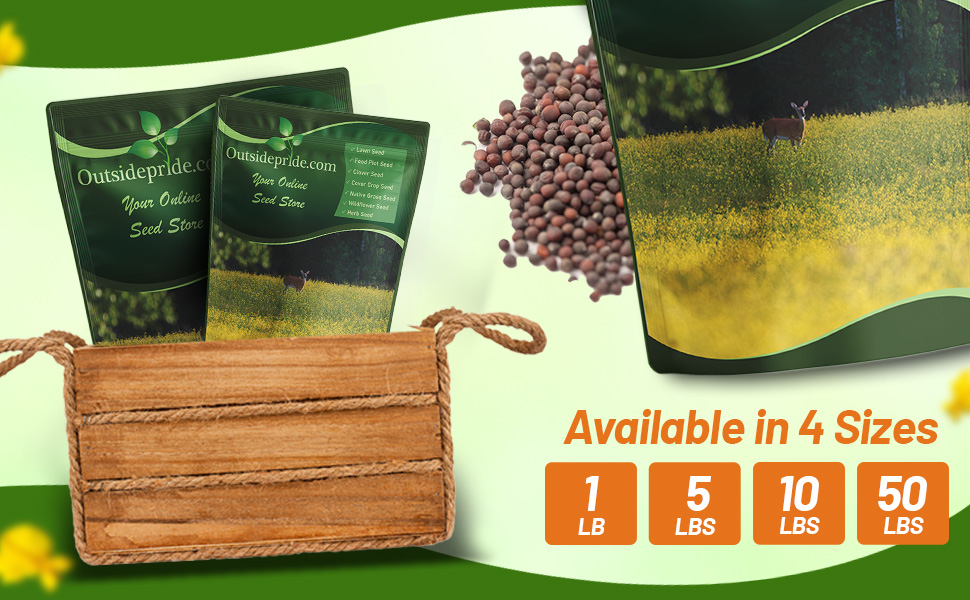
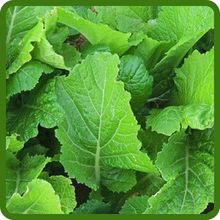
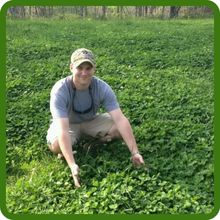
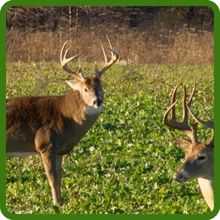
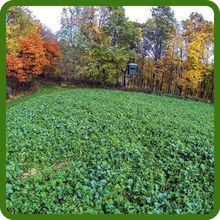
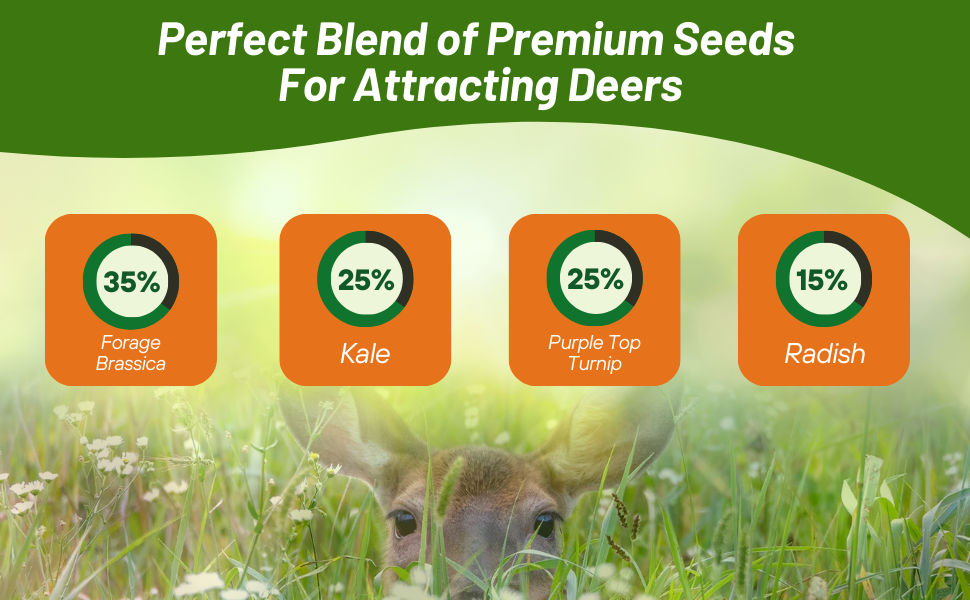
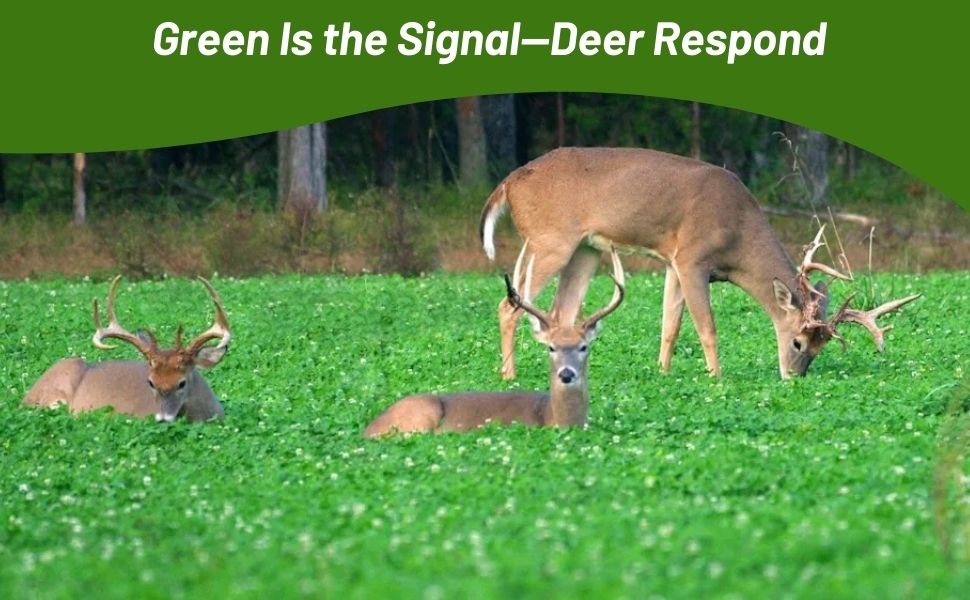
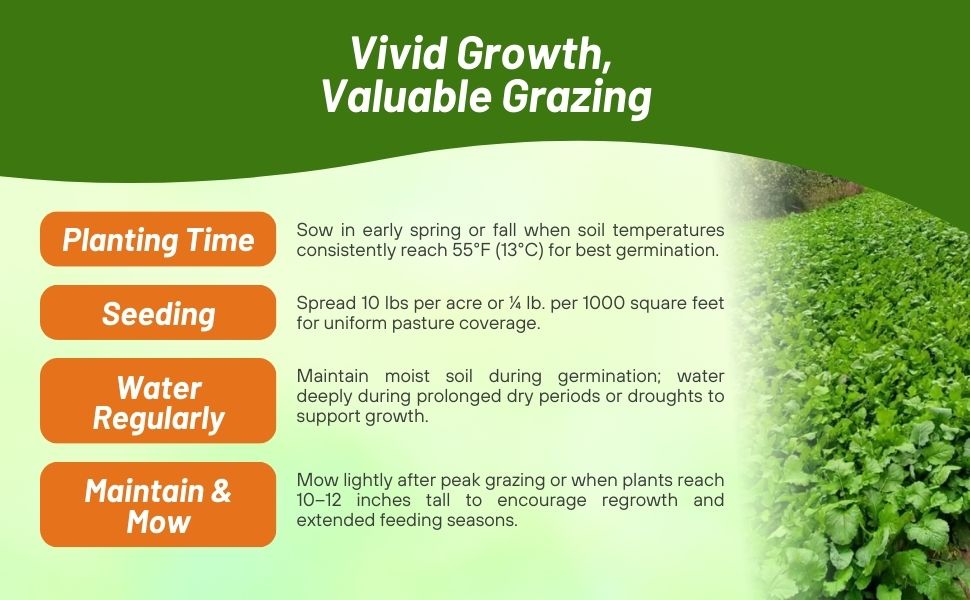
Deer Greens is a 100% mixture of brassicas including rape, purple top turnip, kale and radish that provides an abundant high protein and energy rich diet for deer. It germinates quickly to provide an immediate high protein food source to help fill seasonal nutritional gaps. As winter sets in, carbohydrates contained in the leaves of the deer greens ingredients are converted to sugars providing a highly palatable source of energy during the colder months following the rut. After the leaves are consumed, deer continue to consume valuable nutrients by browsing on the large roots formed by the radish and turnip plants.
Deer Greens can be mixed at a seeding rate of 1 - 2 lbs. per acre with winter annual grasses and clover to speed food plot establishment and enhance deer attraction. It may also be planted in late winter/early spring to provide a green leafy food source in the late spring and early summer months. To attract and provide nutrition for deer buy deer greens or to furnish a high quality food source for post-rut bucks and pregnant does this is the best deer food plot source for you. You can also use in a mixture with winter annual grasses and clover to speed food plot establishment and enhance deer attraction to your food plot.
How to Plant Deer Food Plots:
Method: Choose a site that receives a minimum of 8 hours of full sun. Prepare a clean, smooth and firm seedbed by plowing and dragging the soil. Fertilizer and lime can be applied during this step to incorporate it into the soil. Broadcast seed evenly across the soil surface and use a culti-packer or light drag to cover the seed. Making good seed/soil contact is the key to establishing a productive food plot.
Seeding Date: South - Sept. 15 thru Nov. 1 and Jan. 15 thru Mar. 15; Upper South - Aug. 15 thru Oct. 1 and Mar. 15 thru May 1; North - Aug. 1 thru Sept. 1 and Apr. 1 thru May 15.
Seeding Rate: 10 lbs. per acre or ¼ lb. per 1000 sq. ft.
Seeding Depth: 1/4” (stand failures will result from seed planted too shallow or too deep).
Fertilizer: Soil testing is highly recommended. Liming to a pH of 6.0 - 6.5 and providing adequate levels of potassium and phosphorus are necessary to ensure a productive food plot. See your local county extension office for soil sampling assistance. In the absence of a soil test, apply 300 lbs. /acre 19-19-19 (7 lbs./1000 sq. ft.) or equivalent fertilizer and 1 ton/acre ag lime (50 lbs./1000 sq. ft.). Apply fertilizer just prior to seeding. If practical, apply lime a minimum of 3 months before planting.
Management:
To obtain maximum production, apply an additional 30 – 50 lbs. /acre nitrogen 30 – 60 days after emergence with the application of 100 – 150 lbs./acre 34-0-0 (or equivalent) nitrogen fertilizer on the deer food plot.
Tips for Successful Deer Food Plots:
- Every successful food plot begins with a soil test. Most woodland soils have low pH and low fertility. A soil test will tell you how much fertilizer and lime is needed. Information on taking a soil test can be obtained from your local county extension office.
- Spend the extra time necessary to properly prepare the soil by plowing, smoothing and firming the ground. Planting on a weed free, smooth and firm seedbed that allows good seed-soil contact is essential for a thick, productive forage stand.
- Plant seed at the proper seeding depth. Planting too shallow or too deep can result in stand failure. Seed mixes containing small seeded legumes and forbs should not be seeded deeper than ¼ inch. Use a cultipacker, log or a light drag to firm the soil after planting.
- When selecting a wildlife food plot site, choose an area that is long and narrow with curves or bends in it. This provides a sense of comfort and safety for wildlife. When developing food plots, a good rule of thumb is to plant 2.5 to 7 acres of food plots for every 100 acres of habitat.
- Avoid droughty sites such as eroded hillsides or shallow, rocky soils. Southwest facing slopes are hotter in the summer and tend to dry out faster than bottom land.
-
A minimum of 50% full sunshine is essential for a healthy and productive food plot. Morning sun is better than afternoon sun for summer deer food plots. The reverse is generally true in the winter.
































